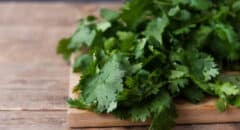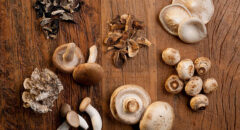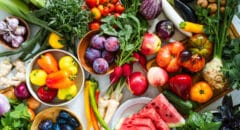Did you know that you can eat a healthy, organic diet on a tight budget?
Believe it or not, eating organic food does not have to be expensive. Over the past few years, the growing interest in organic food and its many benefits has led to more competition and increased availability. Organic options are more accessible, and if you’re concerned about where your food comes from, affordable organic items are available to you.
Many times, people avoid fresh produce because they don’t know how to prepare it and they’ve only been exposed to processed junk. But a little education and an open mind can do wonders for your budget and your health.
Top 12 Foods to Buy Organic
If you have budget constraints, your money is doing more for your health when you put it towards organic varieties of the following fruits and vegetables (listed in descending order, starting with greatest levels pesticide contamination):
- Apples
- Celery
- Sweet bell peppers
- Peaches
- Strawberries
- Nectarines (imported)
- Grapes (imported)
- Spinach
- Lettuce
- Cucumbers
- Blueberries (domestic)
- Potatoes
Save Your Money & Buy Conventional
If going totally organic is too difficult or pricey, play it safe and eat the following conventional produce items to minimize your exposure. These are known to have the least amount of pesticide residue (listed in ascending order, starting with of lowest levels of pesticide contamination):
- Onions
- Sweet corn
- Pineapple
- Avocado
- Cabbage
- Sweet peas
- Asparagus
- Mangoes
- Eggplant
- Kiwi
- Cantaloupe (domestic)
- Sweet potatoes
- Grapefruit
- Watermelon
- Mushrooms
When eating conventional foods, be certain to peel away edible skins and outer leaves (such as those on lettuce) as pesticides are often concentrated there. Remember to wash all produce (conventional and organic) thoroughly with a natural fruit and vegetable cleanser. Peeling and washing can help reduce (not eliminate) pesticide exposure, but also results in the loss of valuable vitamins and nutrients (like fiber). When you have the choice between an organic item and one that’s conventionally grown, choose organic as much as possible.
These four tips can help you pick up plenty of organic products without getting you uncomfortable with your grocery budget.
1. Rethink your food budget.
Free up more dollars for organic food by trimming the fat from your conventional food budget. Add up all the dollars you spend every month on food, including fast food meals, morning cups of coffee, bagels and even trips to vending machines. A small change in your eating habits could free up the money you need to buy the organic foods that you really want.
2. Ease into organic.
Begin the transition to organic eating with some of your favorite foods. Pick a product or two that you decide you really notice a difference in taste and that really excites you. Families with young children may want to start by buying organic baby food and dairy products. If you’re concerned about pesticides, you may want to substitute organic foods for conventional foods with the highest levels of pesticide residues. These include apples, apricots, peaches, pears, red raspberries, strawberries, spinach, peppers, celery and potatoes.
3. Shop at farmers’ markets.
Farmers’ markets are great sources of fresh local produce. A just-picked tomato from a local farm tastes better than a tomato that’s traveled thousands of miles before reaching a supermarket shelf. It’s going to be cheaper and fresher at a farmers’ market. If you don’t see a sign saying the produce is organic, be sure to ask. Some farmers may be making the transition to organic farming. The key to landing good deals at farmers’ markets is to ask lots of questions. Ask about seconds — perfectly tasty but misshapen produce that you may be able to buy at a discount. Ask about discounts for buying in bulk. Ask how you can buy their produce when the market is closed.
4. Bulk up on in season items.
The absolute best time to buy an organic fruit or vegetable is at the peak of its growing season. As the season progresses there’s more produce and the price has a tendency to shift downward, sometimes dramatically. That’s the best time to buy. And that’s the best time to buy big. Load up on all your favorite organic fruits and veggies at dirt-cheap prices.









